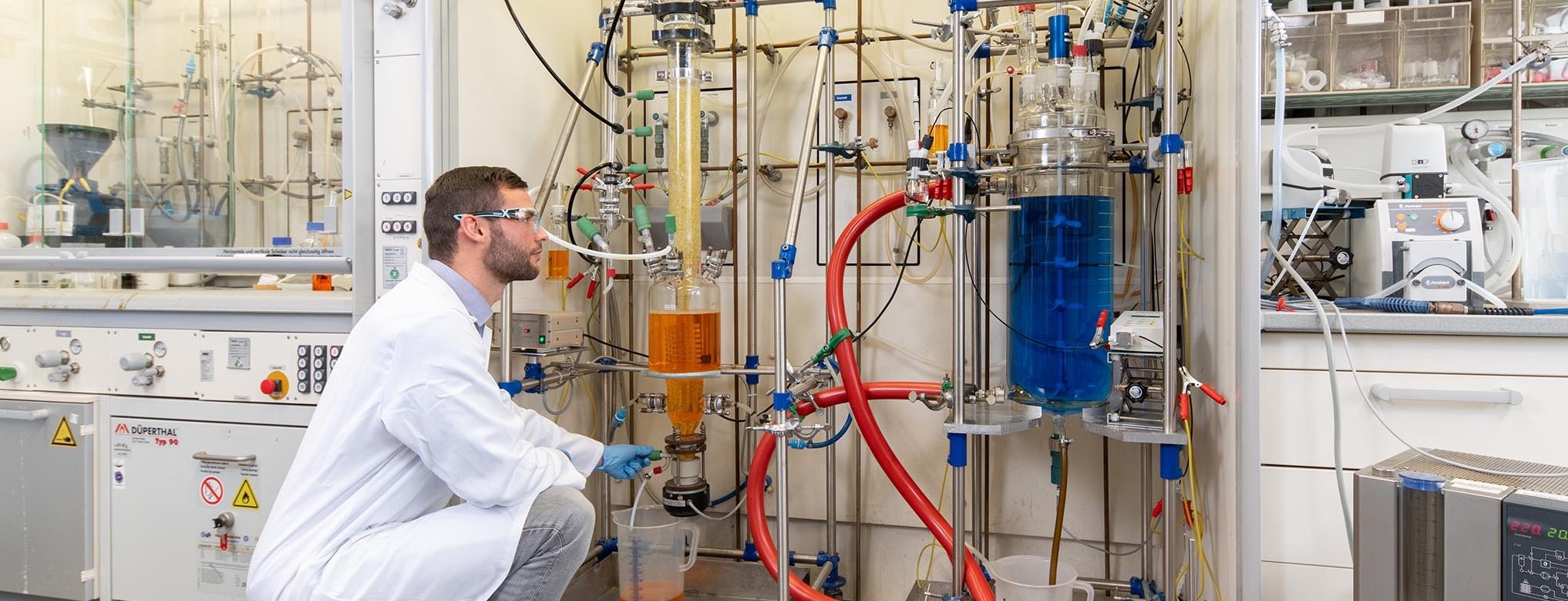Solvolysis - recovery of monomers
Solvolysis results in complete or partial depolymerization of polymers into their constituent monomers and value-added chemicals, which can be utilized as secondary raw materials for the chemical industry. The process is typically applicable to polycondensation polymers. During the process, substances of very high concern like halogenated flame retardants remain intact and can be easily separated using conventional downstreaming unit operations such as filtration. In addition, solvolysis also offers us the flexibility to recycle a specific target plastic fraction from a mixed waste stream by choosing the right solvent and engineering an appropriate catalyst.
Solvolysis involves a series of steps. In the first step, the waste stream is subjected to mechanical pre-treatment involving shredding and washing. Following this, an appropriate solvent, nucleophile, and catalyst have to be chosen for processing, while strictly adhering to the principles of green chemistry. The developed process is then tested on a laboratory scale and is further optimized. Once the developed concept has been validated, an energy-efficient downstreaming strategy to recover the product is developed. This product serves as a source of secondary raw materials for the chemical industry while the solvent and the nucleophile are recovered, purified and reused for a subsequent depolymerization cycle.
As mentioned above, solvolysis is suited for recycling a wide range of thermoplastic and thermoset polymers, widely used in the automobile, construction, electronics, packaging, and textile sectors. Its scope is not only limited to conventional polymers such as polyamide (PA), polycarbonate (PC), polyethylene terephthalate (PET), and polyurethane (PUR) but can also be extended to novel bio-based polymers such as polylactic acid (PLA) and polybutylene terephthalate (PBT). In a nutshell, solvolysis offers a promising solution to the alarming problem of environmental pollution while simultaneously enabling us to reduce the dependency on crude oil and natural gas.
